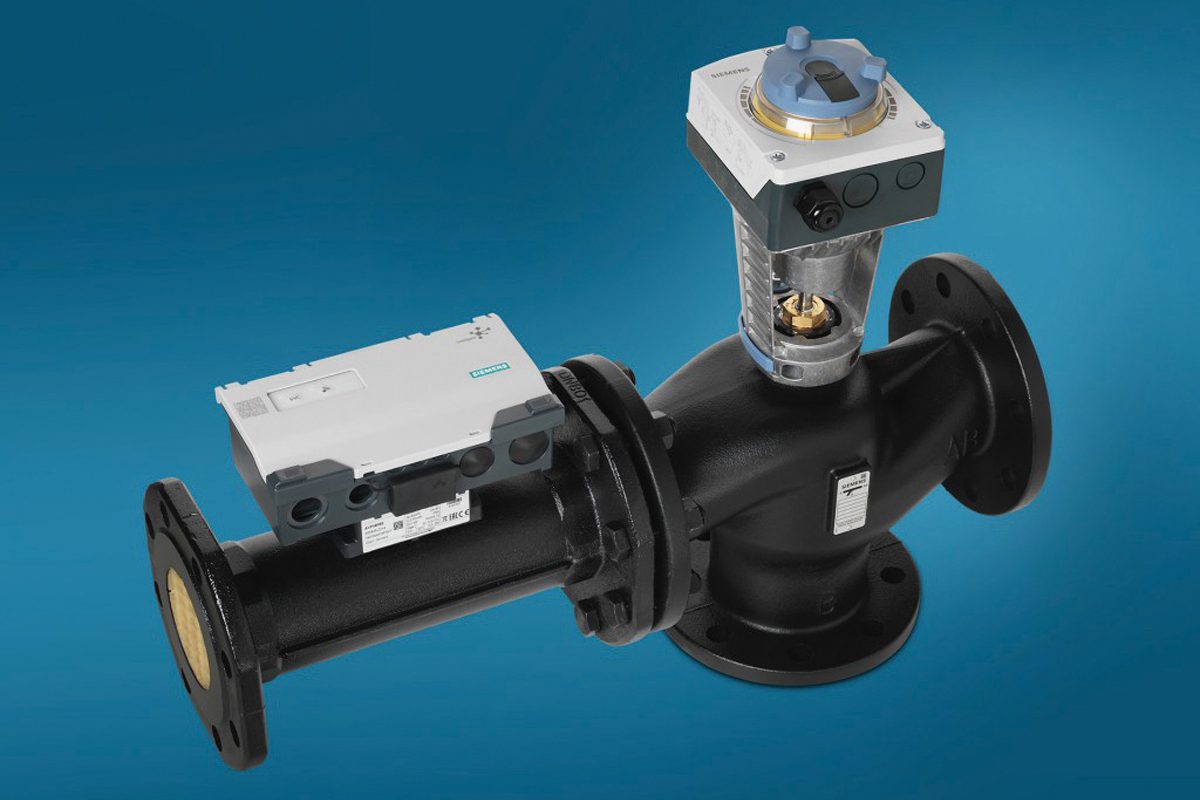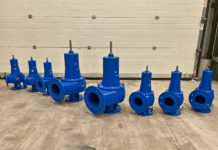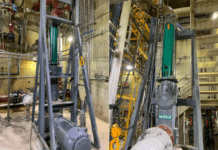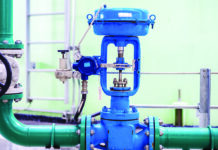The Intelligent Valve from Siemens Smart Infrastructure now has an adaptive flow optimizer, a seemingly unique feature on the market.
The Intelligent Valve is a self-optimizing, dynamic valve with cloud connection.
Features such as automatic presetting, continuous optimization of the delta T limitation (T) and system-generated reports, make it possible to achieve cost and energy savings while maintaining comfort for the building occupants, says Siemens. “For the first time, actions are autonomously evaluated and executed by the Intelligent Valve and communicated to the building operator.”
“The unique Adaptive Flow Optimizer makes the Intelligent Valve more efficient and competitive than conventional pressure-independent control valves (PICV). Thanks to the automatic preset function, the valve now has the ability to automatically adjust the volumetric flow presetting during operation and to control itself. This leads to 37% of energy savings for cooling and ventilation”, said Lu Han, Head of Business Segment Connected Devices at the group.
The built-in learning mechanism is based on system demand and avoids maximum volumetric flow when it is not required. This reduces the probability that the delta T limitation control has to intervene, which would lead to a loss of comfort. Thanks to automatic presetting, installation is quick and easy because the system does not need to have power and the installer does not have to adjust each valve multiple times. As a result, the valve supports out-of-the-box installation.
The Intelligent Valve’s self-adjustment feature makes it easy to accommodate changes of usage and, among other things, helps to continuously optimize the system and immediately detect faults and anomalies. The self-test report makes it easier to document the settings data and prove the efficiency of the system at any time. Since the report is system-generated, entry and copy errors are prevented.
The RS458 interface for connection to Modbus RTU networks facilitates integration in building automation systems and improves monitoring of operating equipment.








